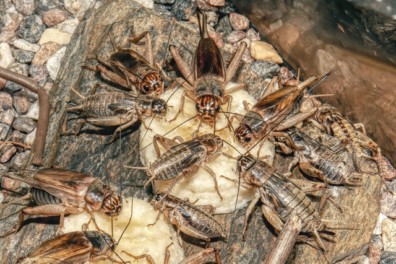Have you ever been captivated by the nighttime sounds of nature, especially the rhythmic chirping of crickets? Perhaps you’ve even read “The Very Quiet Cricket,” the charming book about a little cricket who couldn’t chirp. This familiar sound, often associated with warm summer evenings, carries a fascinating story. To understand why crickets chirp, we turned to insect expert Rich Zack, an entomologist at Washington State University, for some answers.
The Chirping Chorus: Who’s Singing?
If you’re listening to crickets chirp, you’re tuning into a male-dominated serenade. Zack clarified that only adult male crickets are responsible for these distinctive sounds. But why do they create this nighttime orchestra? There are primarily two reasons: establishing territory and, more importantly, attracting a mate.
Male Crickets as Vocalists
Male crickets chirp to assert their dominance and warn off rivals. These territorial chirps are essentially a “stay away” message to other male crickets, helping them define their personal space in the cricket world.
Songs of Courtship and Territory
However, the main purpose of chirping is much more romantic: it’s a mating song. These chirps are love ballads designed to entice female crickets. Interestingly, the “song” isn’t just a generic tune; it’s species-specific, meaning each type of cricket has its unique chirp. Furthermore, the male cricket’s song can even change when a female cricket approaches.
Zack explains, “The male sings a very specific song for that species of cricket. That attracts a female of that species to him. As she gets closer, and they start to recognize each other, he will vary that song a little bit. It’s a way to give the female assurance that he is the right species.” This nuanced serenade ensures that the female cricket recognizes a compatible partner of her own kind.
The Mechanics of a Cricket’s Chirp: Stridulation Explained
So, how do these tiny creatures create such noticeable sounds? The secret lies in a process called stridulation. According to Zack, “All stridulation means is the insect is rubbing two things together.” Crickets employ what’s known as a “file and scraper system.”
The File and Scraper System
Imagine a comb with teeth – that’s similar to the “file” on a cricket’s wing. It’s a ridge of tiny bumps or pegs on one wing. The “scraper” is a hardened edge on the other wing. By rubbing these two structures together, the cricket produces its characteristic chirp. You can even mimic this sound by running the teeth of a comb along the edge of a table.
Why Females are Silent
This also explains why female crickets remain silent. They simply lack the necessary equipment – the file and scraper system – on their wings to produce sound. Their role in this acoustic communication is to listen.
Listening In: Cricket Hearing
While female crickets don’t chirp, they are excellent listeners. Crickets have hearing organs located on their front legs. This organ, called a tympanum, is a delicate membrane, much like your own eardrum.
The Tympanum: A Cricket’s Ear
Just as your eardrum vibrates when sound waves reach it, so does the tympanum in a cricket’s leg. These vibrations are then converted into signals that travel to the cricket’s brain, allowing it to perceive sound. This sophisticated hearing system enables female crickets to detect the mating songs of males.
 Close-up of field cricket showcasing wings and body structure, useful for articles discussing cricket chirping mechanisms and entomology.
Close-up of field cricket showcasing wings and body structure, useful for articles discussing cricket chirping mechanisms and entomology.
A World of Cricket Songs
Crickets belong to the same insect family as grasshoppers and katydids, all of which utilize stridulation for sound production. While katydids also rub their wings together like crickets, grasshoppers have a slightly different method, rubbing their legs against their wings.
Species-Specific Melodies
Remember that each cricket species has its own unique song? As Zack mentioned, these variations are so distinct that you can differentiate cricket types just by listening to them.
Identifying Crickets by Sound
“There are some rare crickets in Washington,” he recounted. “We would go out and try to find them. The way you do that is to listen for the songs. We could differentiate the songs, and then we would go search for that type of cricket. You can sit outside at night and differentiate cricket songs, too.”
So, the next time you hear crickets chirping on a warm evening, take a moment to appreciate the complex communication happening in their tiny world. These songs are not just random noise; they are vital messages of courtship and survival echoing through the night. Listen closely, and you might just start to distinguish the different melodies of the cricket chorus around you.
